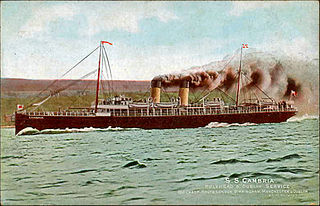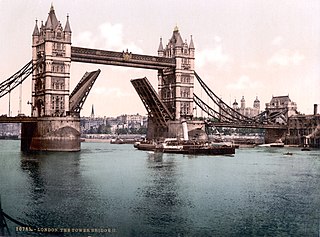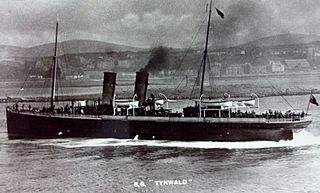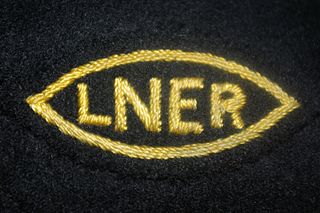George Forrester and Company was a British marine engine and locomotive manufacturer at Vauxhall Foundry in Liverpool, established by Scottish engineer George Forrester. The company opened in 1827 as iron founders and commenced building steam locomotives in 1834.

The Post Office Packet Service dates to Tudor times and ran until 1823, when the Admiralty assumed control of the service. Originally, the Post Office used packet ships to carry mail packets to and from British embassies, colonies and outposts. The vessels generally also carried bullion, private goods and passengers. The ships were usually lightly armed and relied on speed for their security. However, Britain was at war almost continuously during the 18th and early 19th centuries with the result that packet ships did get involved in naval engagements with enemy warships and privateers, and were occasionally captured.

SS Lady Wicklow was a steam-powered ferry built in 1890 in Belfast, Ireland for the City of Dublin Steam Packet Company. She was 262 feet long and had a beam of 34 feet.
Empire Baron was a 5,890 GRT cargo ship which was built in 1926 for Navigazione Generale Gerolimich & Compagnia Società in Anzioni, Trieste, Italy. She was captured by the Royal Navy in 1940 and ownership passed to the Ministry of War Transport (MoWT). She was renamed Empire Baron. She was sold in 1947 to Navigation & Coal Trade Ltd, London and renamed Rubystone. She was sold to a Panamanian company in 1951 and was scrapped in 1960.

Dieppe was a steam passenger ferry that was built in 1905 for the London, Brighton and South Coast Railway. She was requisitioned during the First World War for use as a troopship and later as a hospital ship HMS Dieppe, returning to her owners postwar. She passed to the Southern Railway on 1 January 1923. In 1933 she was sold to W E Guinness and converted to a private diesel yacht, Rosaura. She was requisitioned in the Second World War for use as an armed boarding vessel, HMS Rosaura. She struck a mine and sank off Tobruk, Libya on 18 March 1941.

TSS Cambria was a twin screw steamer passenger vessel operated by the London and North Western Railway from 1897 to 1923.
PS Alexandra was a paddle steamer passenger vessel operated by the London and North Western Railway from 1863 to 1889.

Steamboat services started on the Thames in around 1815 and for nearly 25 years were the main use of steam to carry passengers before the emergence of railways in the south of England. During this time at least 80 steamers are recorded in the Thames and the Steamboat Act of 1819 became the first statute to regulate the safety of the new technology for the public. Wooden boats driven by paddle-wheels, they managed during this time to establish themselves as faster and more reliable than the earlier use of sailing and rowing boats for passenger transport within the Thames estuary.
PS Ocean was a paddle steamer built for and operated by the St. George Steam Packet Company from 1836, then the Cork Steamship Company and then the Chester and Holyhead Railway from 1853 to 1859 and the London and North Western Railway from 1859 to 1862.

SS (RMS) Tynwald (III), No. 95755, was an iron passenger steamer which served with the Isle of Man Steam Packet Company, and was the third vessel in the Company to bear the name.

SS (RMS) Mona (III), the third ship of the Company to bear the name, was a steel paddle-steamer which was originally owned and operated by the London, Chatham and Dover Railway Company, who then sold her to the Liverpool and Douglas Steamship Company, from whose liquidators she was acquired by the Isle of Man Steam Packet Company in 1903.
John Grantham (1809–1874) was an English engineer, born in Croydon Surrey, who was involved in marine, railway and tramway engineering. He was the second son of another John Grantham. After leaving school, John (junior) worked with his father surveying routes for projected railway lines in England.

SS Shuntien was a 3,059 GRT coastal passenger and cargo liner of the British-owned The China Navigation Company Ltd (CNC). She was built in Hong Kong in 1934 and sunk by enemy action in the Mediterranean Sea with great loss of life in 1941. A Royal Navy corvette rescued most of Shuntien's survivors, but a few hours later the corvette too was sunk and no-one survived.

SS or RMS The Ramsey was a passenger steamer operated by the Isle of Man Steam Packet Company from 1912 to 1914. She had been built in 1895 as Duke of Lancaster for the joint service to Belfast of the London and North Western Railway and Lancashire and Yorkshire Railway companies. The steamer was requisitioned by the Admiralty in 1914 as the armed boarding vessel HMS Ramsey and sunk the following year.
The TSS City of Belfast was a passenger vessel built for the Barrow Steam Navigation Company in 1893.
TrSS St Petersburg was a passenger vessel built for the Great Eastern Railway in 1910.

TSS Alberta was a passenger vessel built for the London and South Western Railway in 1900.
Sligo Steam Navigation Company was formed in 1865. It provided weekly sailings between Glasgow and Liverpool. The company was formed out of Messrs. Middleton and Pollexfen a trading partnership based in Sligo. The company was one of the last three independent cross channel Irish shipping companies still operational in the 1930s. In 1936 Coast Lines Ltd bought Sligo Steamship Navigation Company.
Water Witch was an early British wood-hulled paddle steamer, built in 1835 at Harwich, England for steam packet services from Dover to London and to Boulogne. A successful fast ship, she was later operated on services on the South Coast of England and in the Bristol Channel













